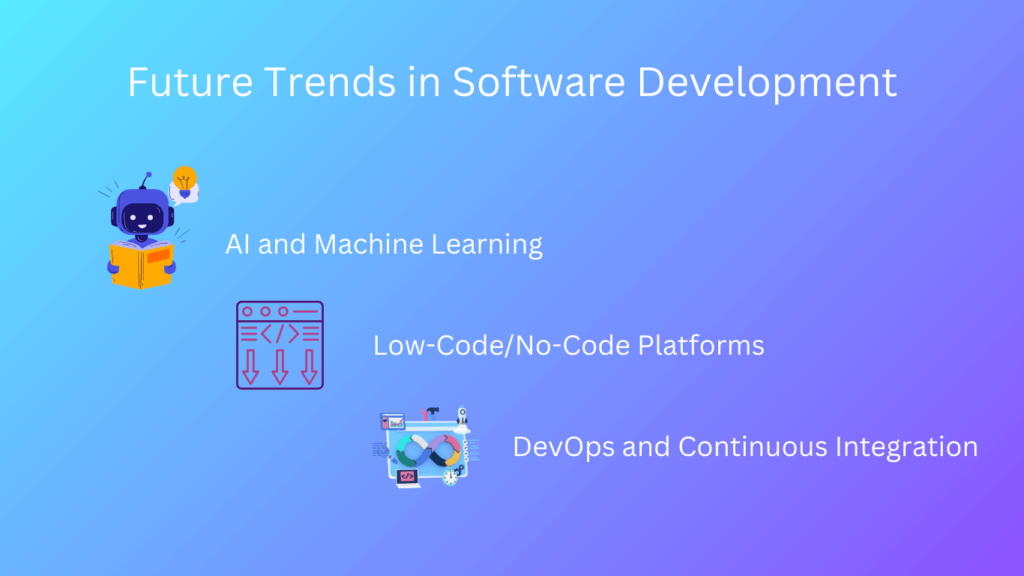Develop software applications refers to the process of designing, creating, testing, and maintaining software programs that run on various platforms such as computers, mobile devices, or cloud environments. It involves a structured approach using programming languages, frameworks, and tools to build functional and user-friendly application
The Art and Science of Developing Software Applications
Developing software applications is both an art and a science. It requires creativity to design solutions that meet user needs and technical expertise to bring those solutions to life. Whether you’re building software development apps for mobile devices, creating embedded software applications for IoT devices, or developing the application software for online trading, the process demands precision, planning, and passion.
In this guide, we’ll explore the entire journey of developing software applications, from conceptualization to deployment. By the end, you’ll have the knowledge and tools to approach software development like a pro.
2. Understanding the Basics: What Does It Mean to Develop Software Applications?
At its core, developing software applications involves creating programs that perform specific tasks for users. This could range from simple mobile apps to complex enterprise systems. However, not all software development is the same. For instance, the development of software and applications except games focuses on productivity, business, or utility tools, while game development emphasizes graphics, storytelling, and user engagement.
Key components of software development apps include:
- User Interface (UI): How users interact with the application.
- Backend Logic: The code that powers the application’s functionality.
- Database Management: Storing and retrieving data efficiently.
Understanding these basics is crucial before diving into the software development lifecycle (SDLC).
3. The Software Development Lifecycle (SDLC): A Step-by-Step Breakdown
The SDLC is a structured process that guides the development of software and applications. It ensures that the final product meets user requirements and is delivered on time and within budget. Here’s a step-by-step breakdown:
a. Planning and Requirement Analysis
This phase involves gathering and analyzing user requirements. For example, if you’re developing the application software for online trading, you’ll need to understand the needs of traders, brokers, and financial institutions.
b. Designing the Architecture and User Interface
The design phase focuses on creating a blueprint for the application. This includes:
- System Architecture: Defining the structure of the application.
- UI/UX Design: Ensuring the application is user-friendly and visually appealing.
c. Coding and Implementation
This is where the actual development of software and applications takes place. Developers write code using programming languages like Python, Java, or C#. For embedded software applications, languages like C or C++ are often used.
d. Testing and Quality Assurance
Testing ensures the application is free of bugs and performs as expected. This phase is critical for software development apps, as even minor errors can lead to significant issues.
e. Deployment and Maintenance
Once tested, the application is deployed to users. Post-deployment, ongoing maintenance is required to fix bugs, add features, and ensure compatibility with new technologies.
4. Choosing the Right Tools and Technologies for Software Development
Selecting the right tools and technologies is essential for successful software development. Here are some key considerations:
a. Programming Languages and Frameworks
- Python: Ideal for web development and data analysis.
- Java: Commonly used for enterprise-level applications.
- C/C++: Best suited for embedded software applications.
b. Development Platforms
- Mobile Development: Android Studio (for Android) and Xcode (for iOS).
- Web Development: Visual Studio Code, React, and Angular.
- Online Trading Platforms: Tools like MetaTrader for developing the application software for online trading.
c. Version Control Systems
Tools like Git and GitHub help developers manage code changes and collaborate effectively.
5. Best Practices for Developing High-Quality Software Applications
To develop software applications like a pro, follow these best practices:
a. Write Clean, Maintainable Code
Clean code makes it simple to read, comprehend, and edit. Use meaningful variable names, add comments, and follow coding standards.
b. Implement Agile Methodologies
Agile promotes iterative development, allowing teams to adapt to changing requirements. This is especially useful for software development apps with evolving user needs.
c. Ensure Scalability and Security
Design applications to handle growing user bases (scalability) and protect sensitive data (security). For example, developing the application software for online trading requires robust security measures to prevent fraud.
6. Navigating Industry Standards: NAICS Code for Software Development
The development of software and applications NAICS code (North American Industry Classification System) is 511210. This code categorizes businesses involved in software publishing, including software development apps and embedded software applications. Understanding this classification helps businesses align with industry standards and regulations.
7. Specialized Software Development: Embedded Systems and Beyond
Embedded software applications are specialized programs designed to perform specific tasks within hardware devices. Examples include:
- IoT Devices: Smart thermostats, wearables, and home automation systems.
- Automotive Systems: Engine control units and infotainment systems.
- Healthcare Devices: Medical imaging equipment and patient monitoring systems.
Developing embedded software applications requires expertise in low-level programming and hardware integration.
8. Developing Software for Niche Markets: Online Trading and More
Niche markets like online trading present unique challenges and opportunities. When developing the application software for online trading, consider:
Real-Time Data Processing: Ensuring traders receive up-to-date market information.
Security: Safeguarding private financial information from online attacks.
User Experience: Designing intuitive interfaces for traders of all skill levels.
9. Common Challenges in Software Development and How to Overcome Them
Developing software applications is not without its challenges. Common issues include:
- Scope Creep: Managing changing requirements.
- Technical Debt: Balancing speed and quality.
- User Adoption: Ensuring the application meets user expectations.
To overcome these challenges, adopt agile practices, prioritize communication, and focus on user feedback.
10. Future Trends in Software Development: What’s Next?
The future of software development apps is shaped by emerging technologies like:
AI and Machine Learning: Enhancing applications with predictive analytics and automation.
Low-Code/No-Code Platforms: Enabling non-developers to create applications.
DevOps and Continuous Integration: Streamlining development and deployment processes.

11. Conclusion: Becoming a Pro at Developing Software Applications
Developing software applications is a rewarding yet complex process. By mastering the software development lifecycle, choosing the right tools, and staying updated on industry trends, you can create high-quality applications that meet user needs. Whether you’re working on embedded software applications or developing the application software for online trading, the key is to embrace continuous learning and innovation.


